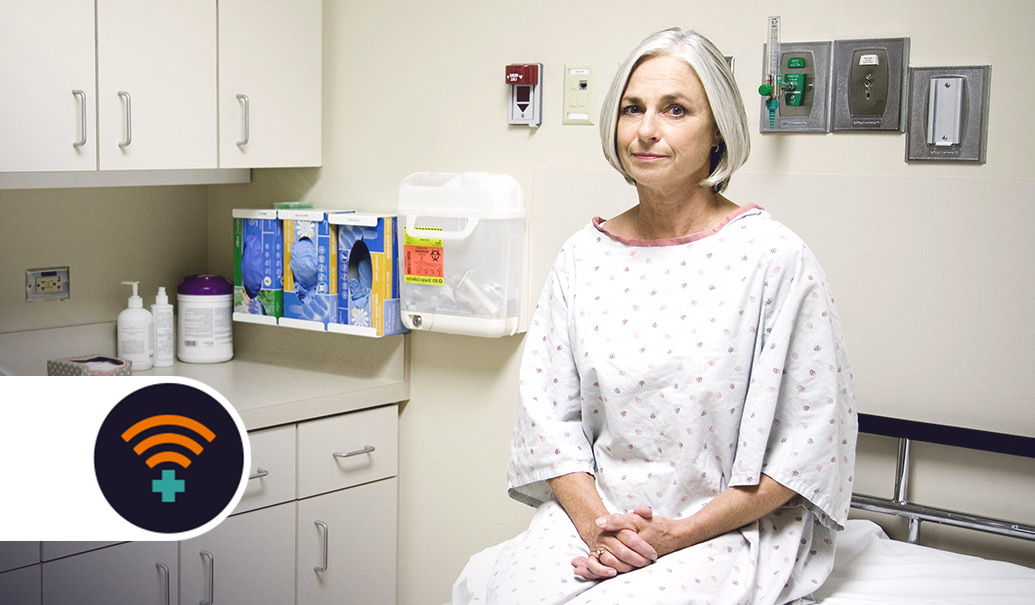This article was first published on Jul. 12, 2022, on the Wall Street Journal Custom Content website.
By now, U.S. policymakers, healthcare leaders and employers recognize that the healthcare system is not returning to what we knew in March 2020. The landscape has adapted in specific ways that open new opportunities for rethinking healthcare in the connected age.
What’s significant about this moment is how the necessary—people’s needs and behaviors—caught up with the possible—technologies that could help the system adapt. As a result, nonemergency healthcare is now less about a place we visit and more about services we can access from a smartphone and a convenient location we choose.
The experience has catalyzed a few broad market changes that are likely to stick. And they’ll have staying power because they align with long-standing needs COVID-19 made more urgent: more convenient access to healthcare, stronger demand for positive patient experiences and getting the best health outcomes at a reasonable cost.
Healthcare market changes to watch
As many consumers in the U.S. learned about the physical and mental health risks of COVID-19, they saw a more prominent role for themselves in their care.
The number of people who say they want to partner with their doctors and create treatment plans together now represents half the U.S. adult population (53%). Increasingly, people insist their healthcare providers see health concerns from their perspective.
They want fewer surprises and the same levels of convenience as they get in other areas of their lives. For providers and health plans, that’s one reason to digitize and support a wide range of experiences, including transparency in pricing, easier appointment scheduling and better ways to communicate virtually.
Thanks to ambitious programs from retailers such as CVS, Walmart and Amazon, more places offer nonemergency care. Hospitals, too, are investing in services and healthcare locations closer to where patients live. And while the change in policy was a temporary pandemic response, the Centers for Medicare & Medicaid Services (CMS) should be ambitious and not walk back on the decision to widen the scope of who can receive care in their home.
ZS research indicates that 8 out of 10 large integrated healthcare networks are investing in alternate sites of care, partly to gain efficiencies of scale for expensive treatments, like surgeries—or to bring standardized care closer to patients via miniclinics.
U.S. consumers welcome these options. In our survey of 4,000 U.S. adults, 73% say they want greater access to care anytime, anywhere—so they can manage their health, on their time, no matter where they are.
Finally, health leaders fast-tracked telehealth, but now many are stepping back to focus on targeted ways to use it at the right times.
By the end of 2021, 8 in 10 telehealth visits were follow-ups, according to a ZS survey of 112 large providers, meaning the patient and doctor had already established a care path. And while the use of telehealth is down from pandemic highs, we still estimate it to be 10 to 20% of future patient visits, with some variation in use across regions and therapeutic areas.
73% of U.S. adults surveyed say they want greater access to care anytime, anywhere—so they can manage their health, on their time, no matter where they are.
One clear pandemic lesson is the obstacles to using telehealth are more pronounced for specific ethnicities and socioeconomic populations already disproportionately affected by COVID-19. These patterns highlight new opportunities for neighborhood pharmacies. They also point to the need for mobile health clinics or fresh grocery services to provide greater access to care and nutrition.
Other less available yet promising hybrid models can keep people out of costly hospital stays. These include virtual-first health insurance plans and hospital-at-home care, where the hospital delivers care to the patient. ZS estimates that 50% of U.S. health insurance plans have increased the availability of at-home care options during the pandemic.
3 clear responses for health industry leaders
Now that consumer and provider behaviors better align with what technology is making possible, where do we go from here? Three responses for industry leaders are front and center:
Trust: The pandemic has eroded social trust in all institutions and politicized healthcare. So, if we genuinely want to embrace new, digital healthcare delivery models, we’ll need a sustained focus on trust in the system. Trust is critical to the industry’s relationship with consumers and its workforce, who regularly suffer staffing shortages and high levels of burnout.
Tech investments: Technology and digital investments will continue to grow, but industry leaders can be more consistent in how they screen these investments for alignment to their overall digital strategy and expectations for adoption and long-term use. Most providers are under enormous financial pressures, so they simply can’t afford to invest in solutions that aren’t coherent with these goals.
Shared risk and reward: At ZS, we already see growing interest in innovative contracts that tie the payment for drugs and devices to their value to clinical practice. These contracts work to reduce treatment variability across large systems, or they use real-world evidence to pinpoint the efficacy of treatments. These types of arrangements often require shared data, analytics and digital capabilities. And they change the provider-pharma dynamic into territory we often want but rarely see—a collaboration that benefits the entire healthcare system.
Add insights to your inbox
We’ll send you content you’ll want to read – and put to use.















